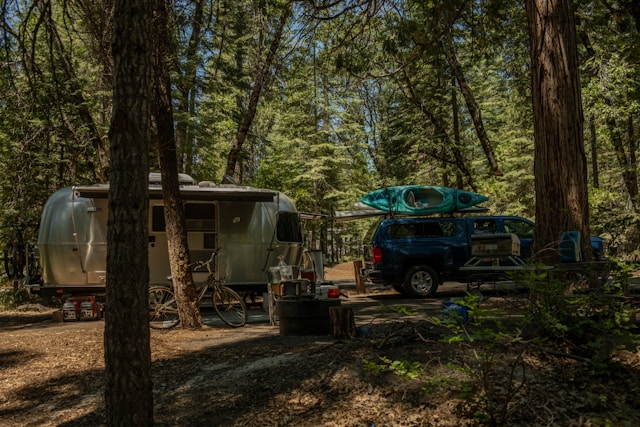Essential Gear and Preparation for Kayak Camping
When venturing into the world of kayak camping, selecting the appropriate gear is paramount for both comfort and safety. A suitable kayak, preferably a touring type with ample storage and stability, is the first critical choice. Equip your kayak with waterproof compartments for storing essentials such as a lightweight tent, a sleeping bag appropriate for the climate, cooking supplies, and enough food and water for the duration of the trip. Safety gear must include a life vest, a helmet for rougher waters, and possibly a dry suit depending on the weather conditions.
Packing efficiently is also vital. Balance the load within your kayak to maintain stability and ensure all essential items are easily accessible. Additionally, familiarize yourself with the kayak’s handling loaded versus unloaded to avoid any surprises on the water.
Navigating and Safety Protocols
Understanding how to navigate your environment is crucial. Utilize marine GPS systems and waterproof maps to keep track of your location. Always plan your route in advance, taking note of potential exit points along the way in case of emergency. Weather can change abruptly, so it’s important to have a reliable means to receive weather updates.
Safety cannot be overstated. Always inform someone of your plans and expected return time. Carry a comprehensive first-aid kit, know basic first aid techniques, and have an emergency communication device, such as a satellite phone.
Top 10 Destinations
Here’s my personal top 10 list for unforgettable adventures:
- Boundary Waters Canoe Area Wilderness, Minnesota – This area offers thousands of lakes and waterways, perfect for days of exploration.
- Everglades National Park, Florida – Paddle amongst mangroves and enjoy wildlife sightings in this tropical paradise.
- San Juan Islands, Washington – Ideal for encountering marine life and enjoying the Pacific Northwest’s unique scenery.
- Green River, Utah – Drift through the desert landscapes of Canyonlands National Park.
- Adirondack Park, New York – Explore over 30,000 miles of rivers and streams in this east coast gem.
- Chesapeake Bay, Maryland/Virginia – Rich history and diverse ecosystems mark this large and varied area.
- Na Pali Coast, Hawaii – Kayak along dramatic cliff faces and pristine beaches.
- Lake Powell, Arizona/Utah – Navigate through narrow canyons filled with crystal-clear waters.
- Acadia National Park, Maine – Paddle in the shadows of majestic mountains and rugged coastline.
- Salmon River, Idaho – Experience the thrill of whitewater kayaking combined with the serenity of secluded camping spots.
Choosing the Best Time to Go
Timing your trip can significantly impact your experience. Weather conditions, water levels, and tourist traffic vary throughout the year. Typically, late spring through early fall offers the most favorable weather for kayak camping. However, some locations, like Florida’s Everglades, are best visited in the winter to avoid the heat and mosquitoes.
Enhancing Skills with Kayak Camping Courses
For beginners or those looking to refine their skills, enrolling in a kayak camping course is highly recommended. Institutions such as the Northwest Outdoor Center in Seattle and the Nantahala Outdoor Center in North Carolina offer excellent programs that cover essential skills, safety protocols, and environmental stewardship.
Joining Kayak Camping Communities
Being part of a kayak camping community can greatly enhance your experience. These communities provide support, share knowledge, and organize group outings, making them a fantastic resource for both novice and experienced kayakers. Check out local clubs or online forums and consider joining events hosted by organizations like the American Canoe Association to connect with fellow outdoor enthusiasts.
Mastering Kayak Camping Skills: Techniques and Insights for Success
As you delve into the art of kayak camping, mastering a few key skills can significantly enhance your safety and enjoyment. Firstly, efficient paddling techniques not only conserve energy but also increase your maneuverability in diverse water conditions. Practice various strokes, such as the forward stroke for speed, the sweep stroke for turning, and the reverse stroke for deceleration or moving backward. Secondly, learning how to pack your kayak effectively will impact its stability and your ease of access to gear. Strategic packing also reduces the risk of losing vital equipment should you capsize.
Advanced Paddling Techniques
- Edging: Utilize edging to improve your kayak’s turning capabilities without losing momentum. By slightly tilting your kayak on its side, you can make sharper turns and better navigate around obstacles.
- Bracing: Master the low and high brace techniques to maintain stability in choppy water or when dealing with sudden shifts in balance.
Campsite Setup and Environmental Considerations
- Choosing a Site: Select a campsite that offers natural shelter from wind and is high enough to avoid high tides or flooding. Always aim to minimize your impact on the surrounding environment.
- Leave No Trace Principles: Follow the Leave No Trace principles by packing out all your trash, minimizing campfire impacts, and avoiding areas where camping might damage the vegetation or wildlife habitats.

